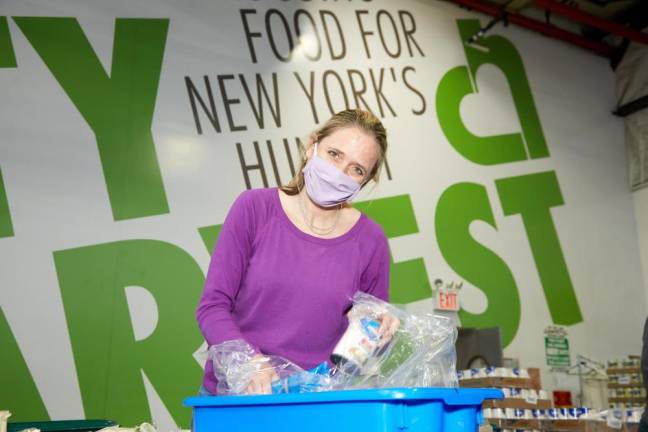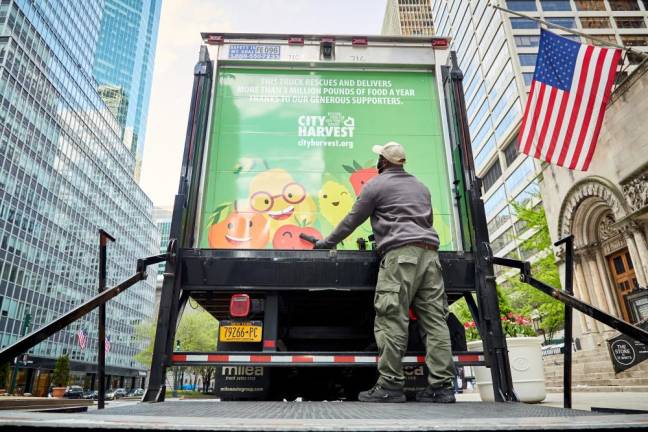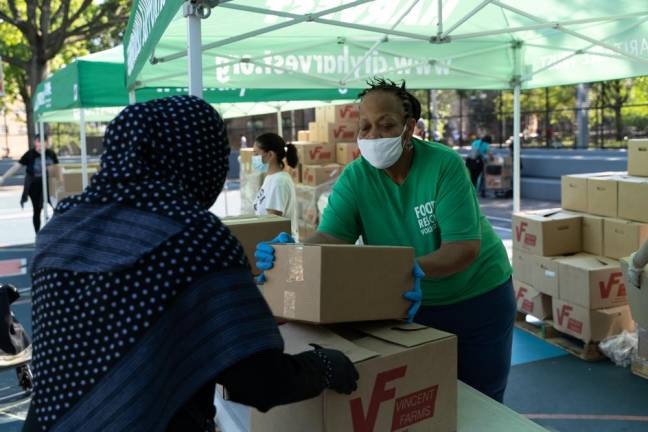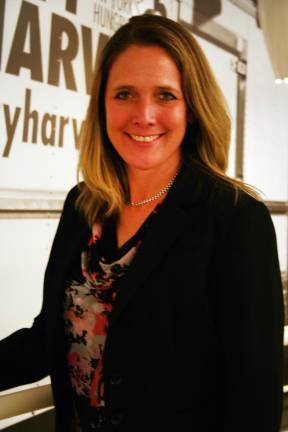Being the COO of New York City’s largest food rescue organization is no easy task, but Jennifer McLean takes on the job with dedication and compassion. Having been at the organization since 2000, she has witnessed firsthand the food insecurity New Yorkers faced after disasters like September 11th and Hurricane Sandy. Now, with the COVID-19 pandemic, her team is grappling with a different kind of crisis, one whose scope is much wider. “This is citywide, every nook, every cranny, every person is impacted,” she said. Through this difficult time, she credits the work of New Yorkers, who stepped in to raise the funds needed in order to expand their efforts.
The renowned urban nonprofit, born in 1982, partners with farmers, restaurants, grocers and manufacturers to procure their excess produce. It obtains the food with their refrigerated trucks that are on the go 24 hours a day, seven days a week, and then employs the use of an algorithm to match it with a place in need. That surplus is then distributed to more than 400 programs, which include food pantries and soup kitchens — that have experienced a staggering 6 million more visits during the pandemic — throughout the five boroughs. “There are agencies we’re talking to that may have served, let’s say 400 or 500 people a week, and now are seeing 2,000, 3,000 people,” McLean said.
When asked about an initiative she’s most proud of, the Colorado native-turned-Upper East Side resident highlighted HarvestWorks, a program she helped launch that works with farmers statewide, giving them a stipend for their extra crops, whose format has since been adopted nationally in other food banks.
Describe your responsibilities as COO.
What rolls under that are all the trucks, the warehousing, the teams that go and find the food throughout New York City, even beyond, and the teams that make sure the food can land in soup kitchens and pantries, meaning that they’re able to bring in the food, safely store it, and then distribute it back to people who are visiting the pantry or soup kitchen. The other part of my job is working with our policy and government relations team on really important policies that impact food on the plate for people. And then the nutrition education programmatic side of our work, so ... people throughout New York City ... can utilize the fresh produce that we bring and make it in a healthy way.
You started at City Harvest in 2000 as the manager of food sourcing. What is one initiative you started there that you’re most proud of?
When I first started, there was a lot of food going to waste in farms. New York state farms are not huge; they’re smaller compared to farms in California, Arizona or Texas. But there’s still a lot of farming in New York state. A lot of these farms are barely making it on their own, so to donate food on top of that is a stressor. They’re busy all day getting their products in the ground and harvested. While they have big hearts and want to help, donating is not always something they can feasibly do easily. So we created a program called HarvestWorks, which has actually grown exponentially, not only here in New York City, but it’s taken on a national footprint. Lots of food banks are doing it, which is, what if we gave this farmer just a few cents on every pound they donated to say, “Listen, you’ve already got a lot of money invested in this crop.” Let’s say apples. They’re already picked them; they’ve already had them in storage; they’ve already spent money on that product, that they don’t want to donate it because it’s expensive. “So if we gave you seven or eight cents on every pound of apples, would you then donate it to City Harvest?” “And what if we sent a truck to you? We’ll send a truck and take care of everything.”
You’ve worked there during Sandy and 9/11. How has the COVID pandemic compared to those disasters?
Working at a place like City Harvest or food banks around the country, you’re realizing like, “Wow, we’re the food supply for people during a disaster.” Not just the day in and day out of making sure people have food. During a disaster, cities rely on the food banks to help. When disasters hit, they really impact people of the lowest income, often the most marginalized populations get hit the worst. So with 9/11, it was a little different because it happened in one location, and a lot of people still sent food to City Harvest as a way to help. Big companies were sending tractors full of food. There was an economic crisis after 9/11, so a lot of that food came in very handy differently. But the actual disaster of Sandy, people lost their houses and needed hot food. They lost their kitchens for months at a time. So that’s where it was a totally different response. And then COVID is completely different because it’s not just five areas along the water, like with Sandy ... the scope of this disaster was so big, that it was really overwhelming in the early days. And the cool thing is that so many New Yorkers stepped up to help fund our work and we were able to expand so greatly.
I watched the feature that PBS did on City Harvest, which was so interesting. They explained that you use an algorithm to match the food.
Because we’re food rescue, it’s not like the pantries and kitchens can go on an order. Our inventory is serendipitous a bit. We have a find a way to allocate it to the city ... What our algorithm does is looks at everything that’s in the warehouse and runs through a set of questions. How big is the refrigeration? How big is their freezer? Are they able to take frozen meat? Are they interested in fresh vegetables or can they not take them? So the algorithm has seven questions it rolls through and then from that, it throws it all into an Excel spreadsheet based on the inventory. It takes each agency, each pantry and says, “This is how many potatoes, carrots, frozen chicken they can take.” And every day, puts it in a spreadsheet and someone manually goes through and looks and says, “This agency got sweet potatoes last week, let’s instead give them carrots this week so they can have a little bit of variety.” Then it looks at your truck capacity, and says, “This is what you can put on that truck to capacity to make sure you get food to these seven pantries today.”
What feedback have the food pantries and soup kitchens been giving during COVID as far as the change in the need?
There are agencies that served two days a week, and now they have to open their doors seven days a week. I think people, for the first time, are going to pantries that maybe had never even known they existed in their neighborhood or never had to know. Holy Apostles [Soup Kitchen in Chelsea] always served about 1,000 people every day, Monday through Friday, for lunch. And their line would consist of people who were street homeless, people who were working and needed a place to grab a free meal during the day. They have created a way to get food out to go when things were the toughest there and they needed to make sure people still got that lunch. It was similar for The Bowery Mission, where they created these to-go meal kits — that you could just walk up to the window, grab it and go.
To learn more, visit www.cityharvest.org



